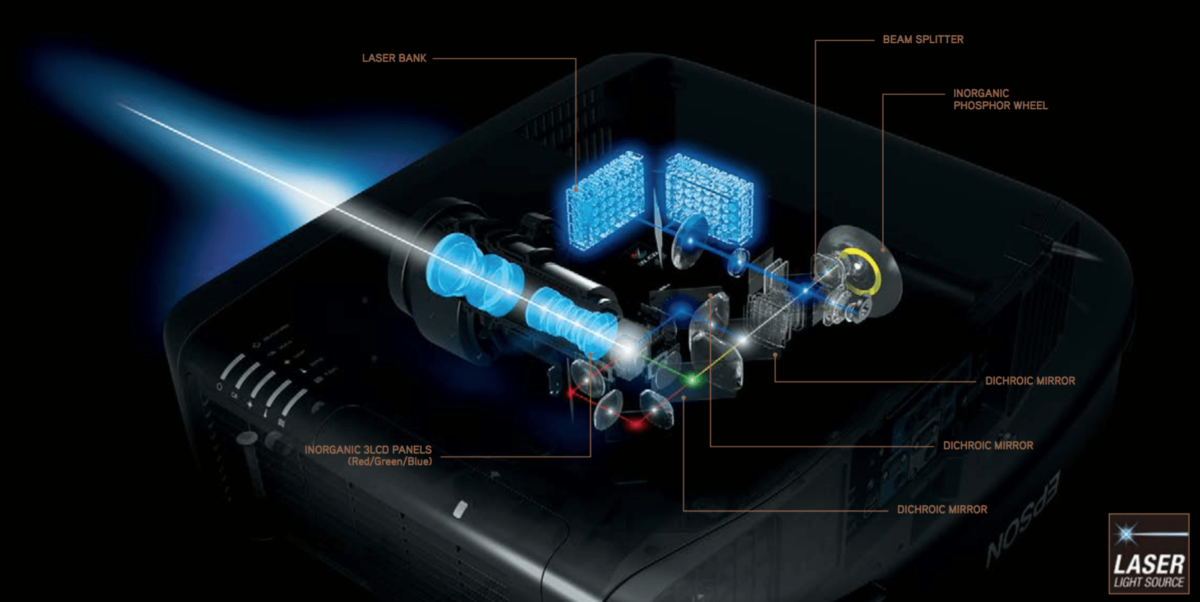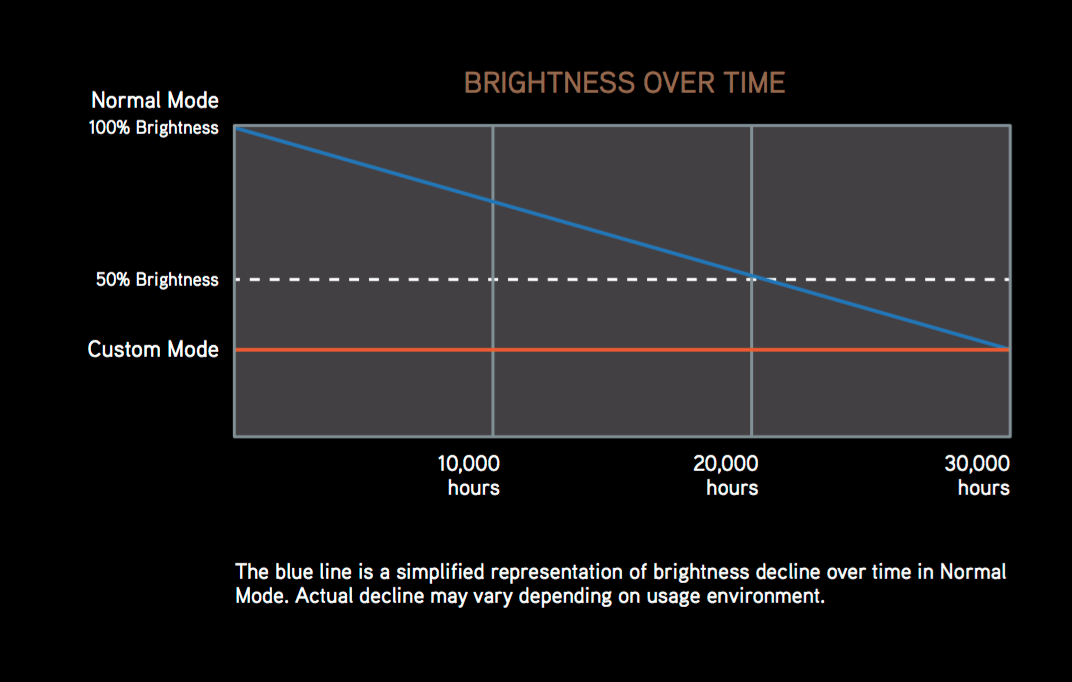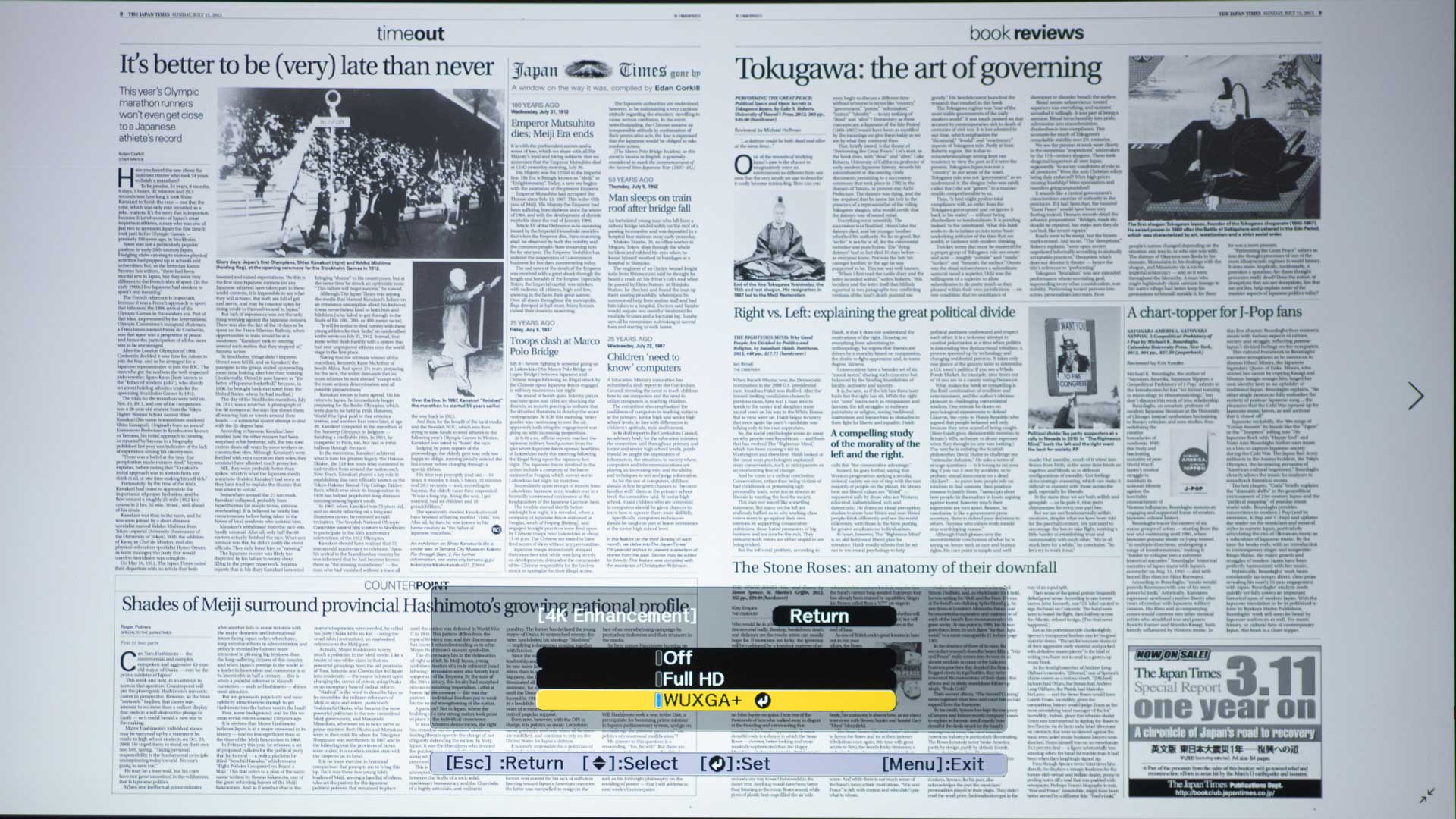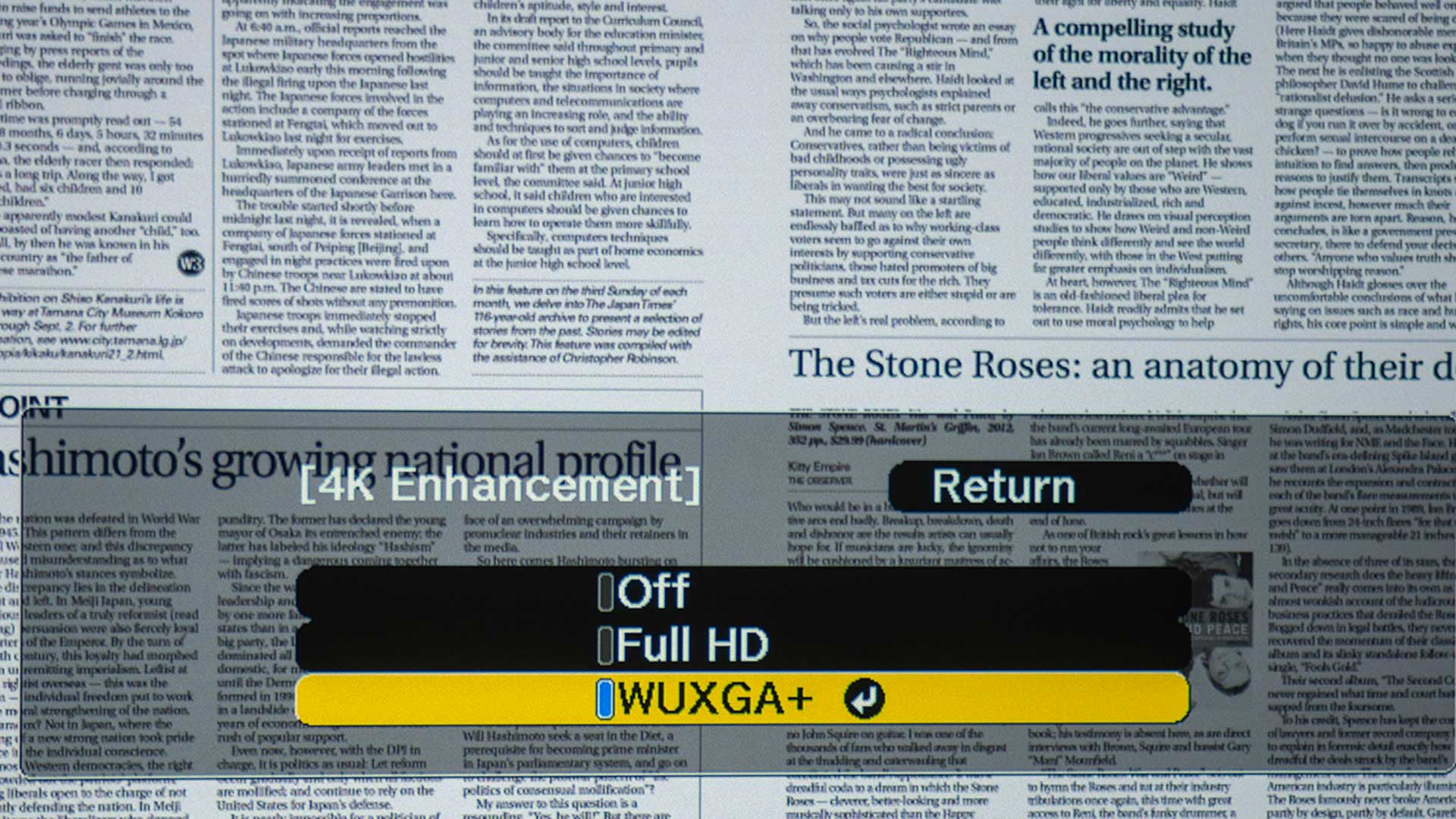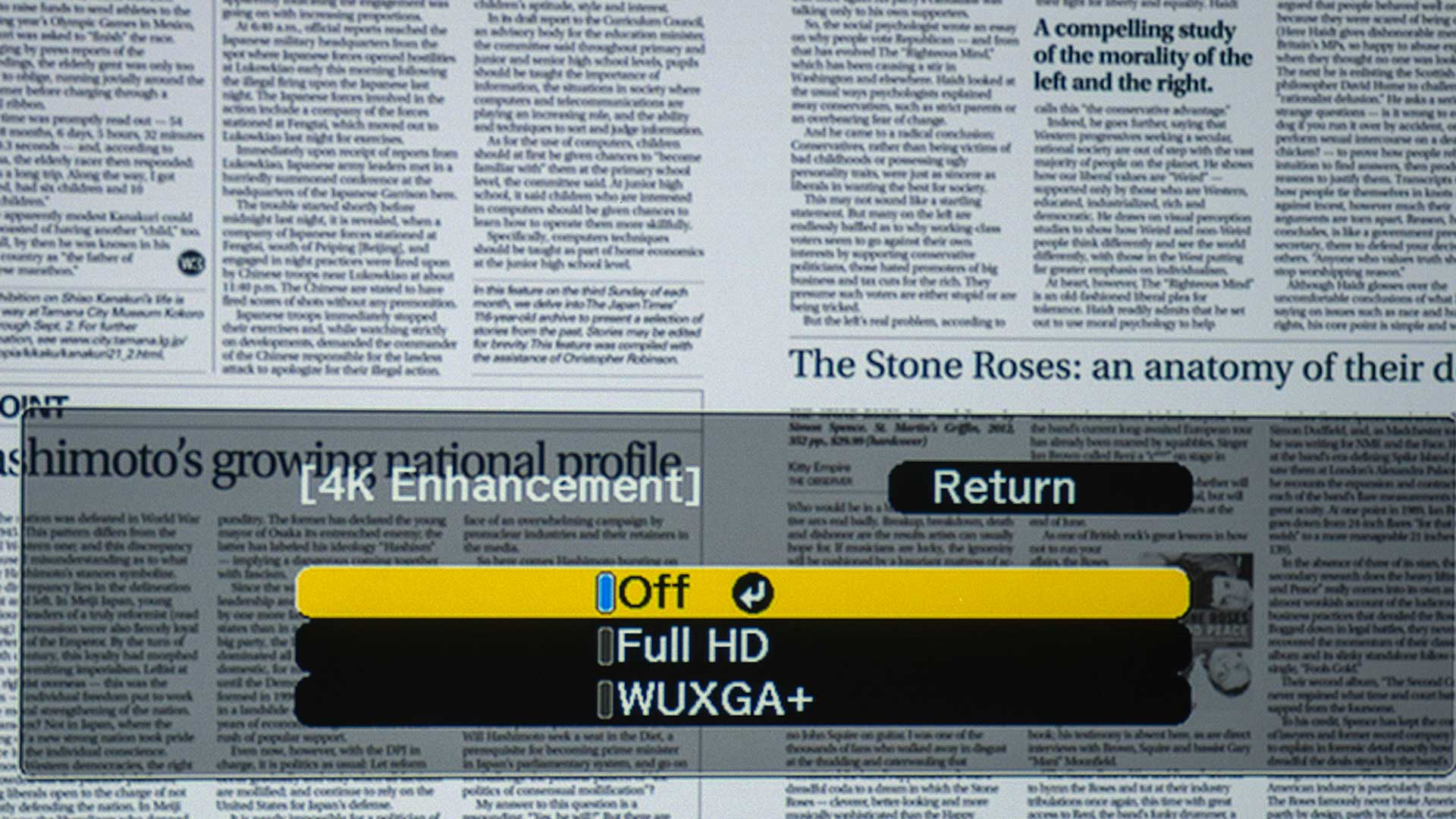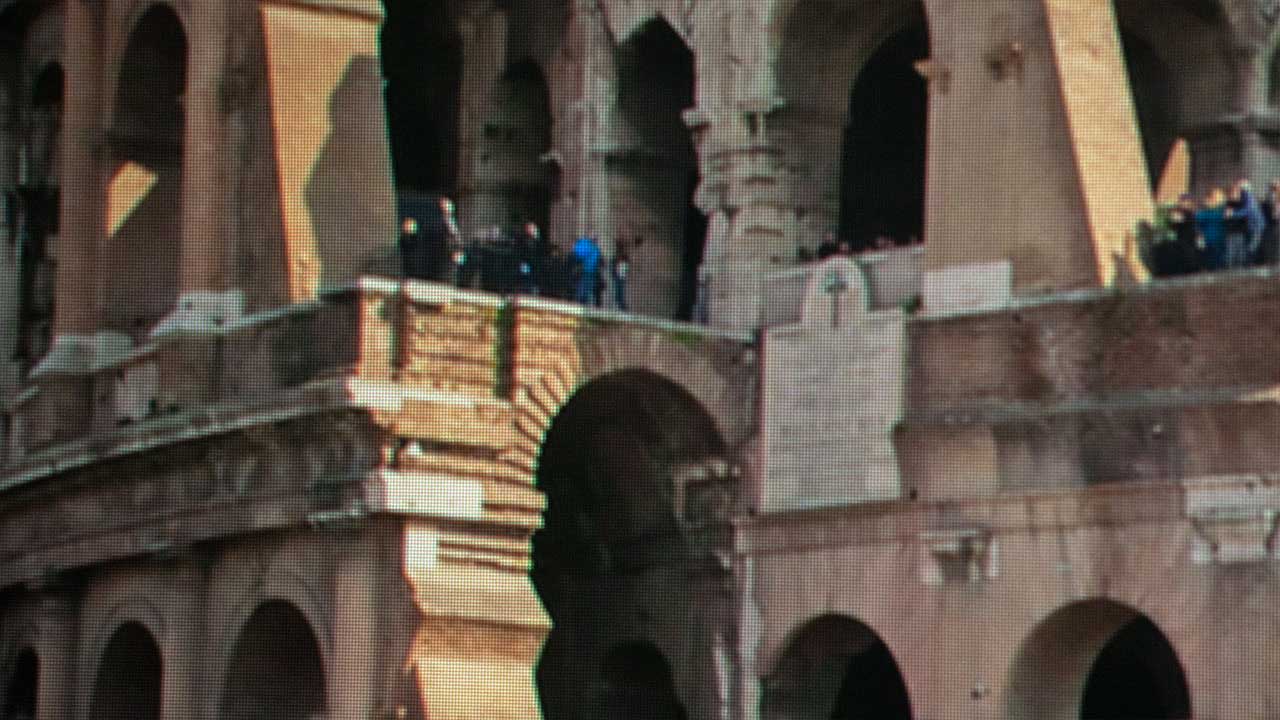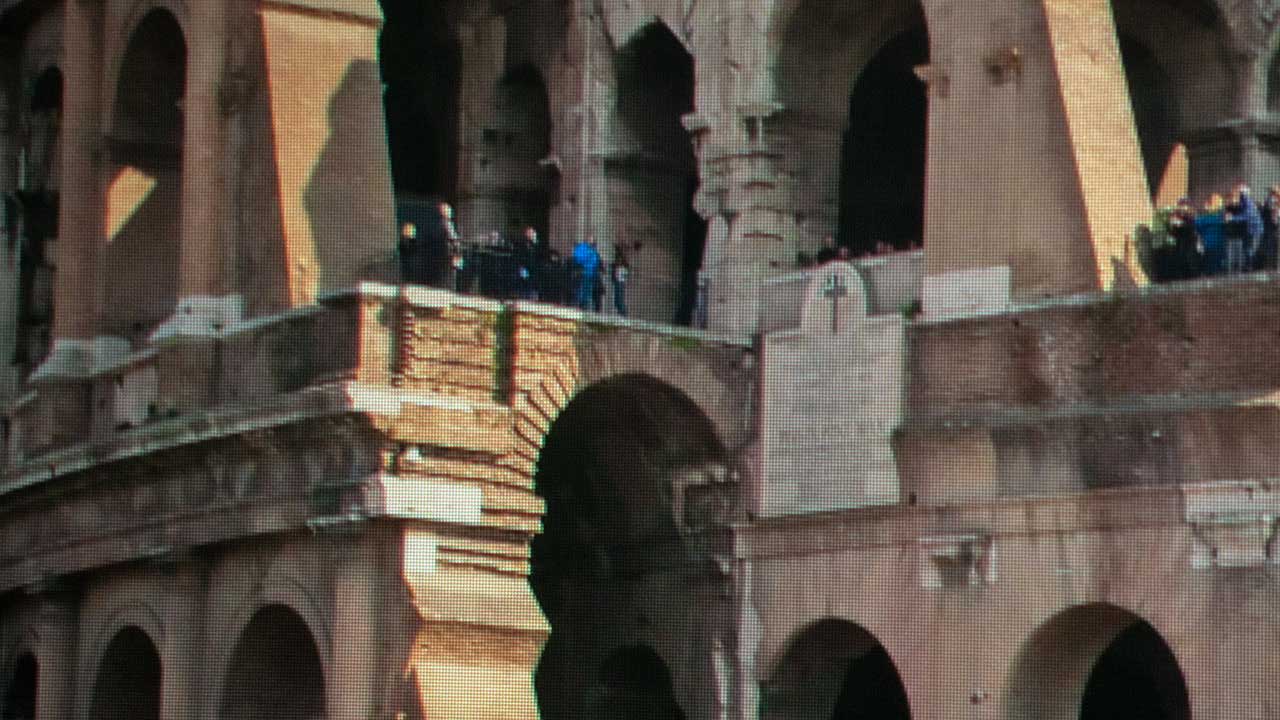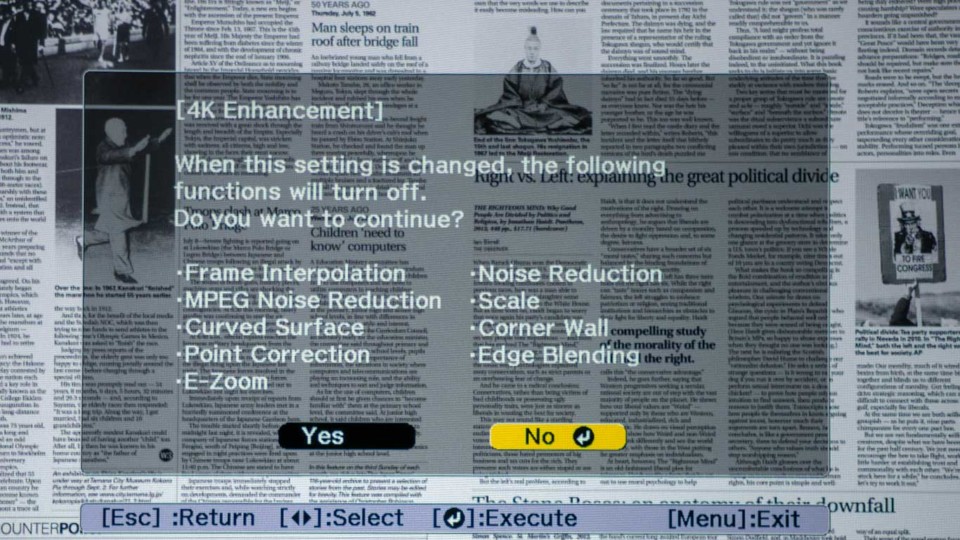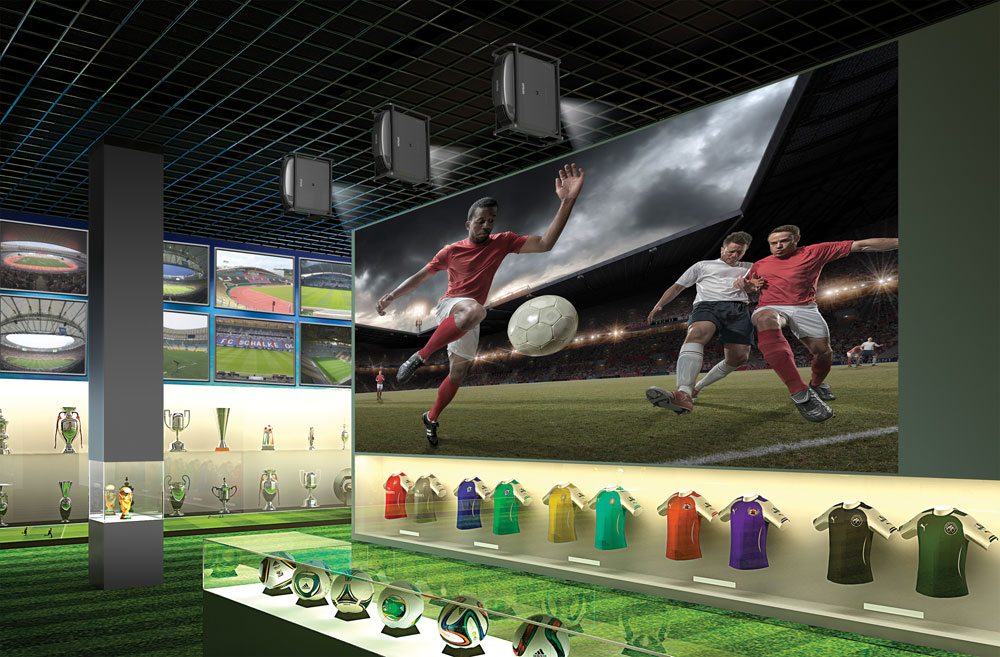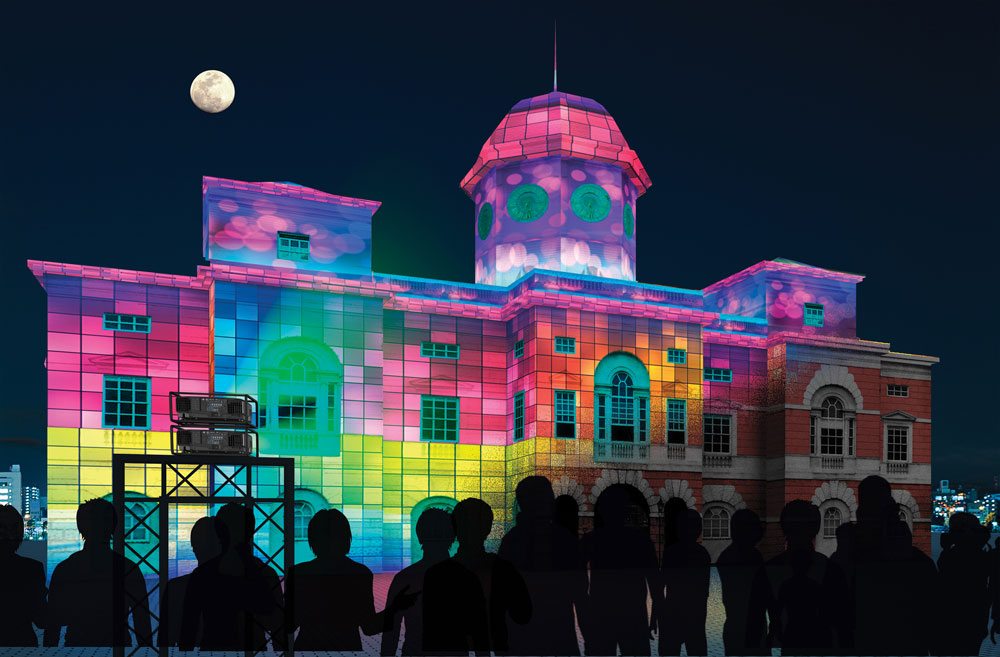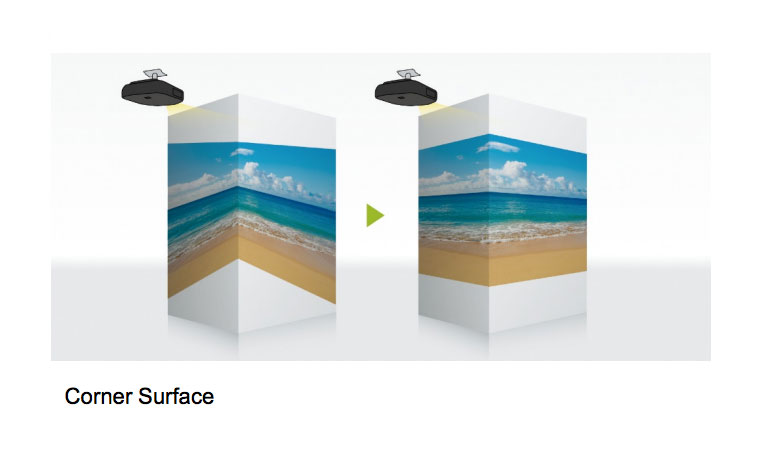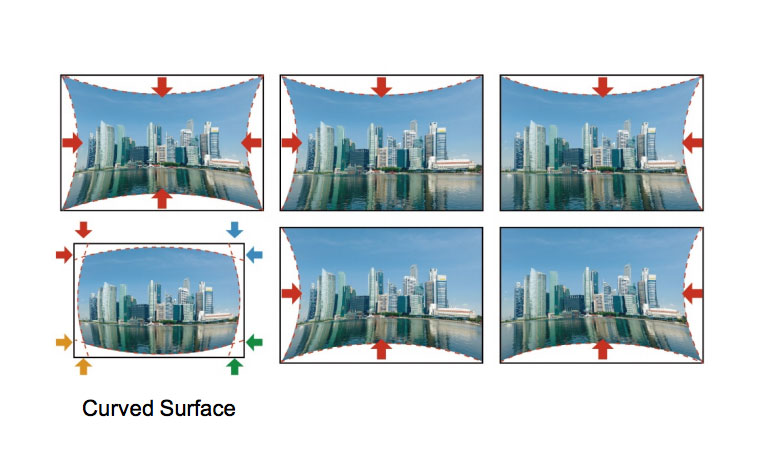While pixel shifting can’t match the resolution of a true 4K projector, it does increase sharpness and detail compared to a standard 2K projector. The Epson Pro L1755UNL projector can accept up to a 4K@60P signal. When fed 4K content, this Epson projector uses pixel shifting to fine tune the image to more closely resemble 4K. Pixel shifting fires each pixel twice by shifting the location by 1/2 pixel diagonally. Combined with good image processing, it does a very nice job emulating the original 4K content.
The included images show the difference between image enhancement modes. While there’s noticeable improvement with pixel shifting on 2K content, it is even better when the Pro L1755UNL is displaying 4K content.
When viewed in person, the actual differences on the screen are greater than what you are seeing on this site. This is because of the heavy compression and scaling of the images for the web, so the differences you are seeing when viewing it on this website will be less noticeable. As you can see in the above images, when you compare 4K content with pixel shifting turned on and off, the difference is impressive.
Small type and fine details that can’t be discerned on a basic 2K – WUXGA (or 1080p) projector can often be resolved with pixel shifting. It is enough to make a real readability difference on CAD, engineering and scientific drawings renderings and anything else demanding max detail.
It is only when you do a side-by-side comparison between a true 4K projector versus a 2K pixel shifting projector that the resolution difference is noticeable. The images below show the resolution difference between my true 4K projector and the ProL1775UNL which is utilizing pixel shifting for comparison when displaying native 4K content.
So how do I choose between a pixel shifting projector like the Epson ProL1755UNL and a true 4K projector? To make a wise decision you must factor in your budget, what you are watching and from where you are watching it.
True 4K high lumens projectors cost at least four to five times as much as their 2K counterparts. Consider this, a Sony 8,000 lumen true 4K laser projector retails for $60,000 while an Epson pixel shifting 16,000 lumen 2K laser projector, like the ProL1755UNL, cost about 1/3 of that amount.
In many situations, the content lacks the detail required and is viewed at a distance where the difference between 4K and pixel shifting cannot be perceived. So, if the image is going to be viewed from fairly far away, a brighter, less expensive pixel shifting projector like the ProL1775UNL is probably a better solution than a true 4K model for that application.
NOTE: Pixel Shifting requires a lot of processing so it cannot be combined with some features like edge blending, and Creative Frame Interpolation, but even some more basic things, including some types of noise reduction.

